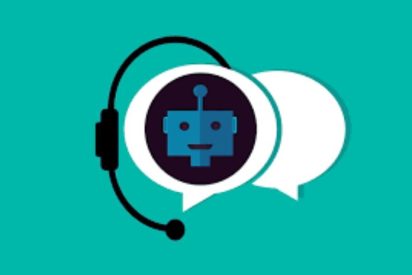Not long ago, we talked about robots, and we already had a ready-made stereotype. Over time, the possibilities of the robot theme have expanded. Virtual agents are an evolution of answering machines or automatic recordings in answering services.
Although this market moment is very favorable to this technology, many managers have already used chatbot services and were dissatisfied. Or, something closer to the Brazilian scenario: some still don’t know the benefits of chatbots and how they can improve the user experience.
Virtual Agents: Discover How Chatbots Work
Although they are on the rise in the market and are widely used, many companies still doubt how to use virtual agents in digital strategies. If this is also the case for you, then we have gathered the top answers here:
What Is A Virtual Agent?
Also called chatbots or simply bots, virtual agents are software programs to conduct an online conversation using text messages. It can fulfill this task through artificial intelligence, managing message exchanges to simulate a human conversation. Impressive, right?
How Do Companies Use Chatbot Technology?
There are several possible applications for virtual agents. The most common of these is in customer service. This is done based on questions that often appear when approaching customers, which are listed with prompt responses to optimize service queues.
Besides that, bots are also used for e-commerce, scheduling, reservations and lead capture, tasks that are infinitely more advantageous due to standardization and efficiency, performing repetitive and operational actions.
What Are The Advantages Of Having Virtual Agents In The Company?
There are many benefits to adopting text messaging software, including along all stages of the consumer buying journey.
The issue is that the robot retains information from pre-sales to post-sales – and makes decisions based on it. This involves, for example, choosing assertive triggers for Call To Action. And in addition, it makes these conversations very similar to human service.
By the way, still, in the case of customer service, when having a human attendant, performance can be influenced by variables: we are always at the mercy of tiredness, pressure, stress and mood swings.
The virtual agent is the ideal solution for automatic and repetitive tasks. In this way, he can:
1) Being more efficient in standardizing care: regardless of the day or situation, a bot can maintain a standard of care without being influenced by variables precisely because it is better suited to repetitive tasks since it is a robot.
2) Optimizing work time in customer service: having a comprehensive script to guide the conversation in different directions, the virtual agent will carry out the work automatically until it overcomes the complete service queue in a fully standardized way.
3) Increasing convenience for the customer: mainly due to providing more agility to the service through the customer’s favorite channels, in addition to being personalized and efficient in a very convenient way, having a very assertive approach obtained from the crossing of data to understand the best time to make the best offer.
4) Improving User Experience: According to Forrester research, using bots can achieve up to 80% cost savings, and Average Handle Time (AWT) can be reduced by up to 15%. The reduction in Average Wait Time (AWR) is also associated with using chatbots.
5) Positively impacting the company’s results: this happens because it usually gives excellent conversion results and reduces the Customer Acquisition Cost (CAC). Other than that, it is an excellent automatic lead generator and can be integrated with CRM and other software.
How Can I Have BOTs Virtual Agents In My Company?
There’s a simple 3-step roadmap to get you started implementing bot service in your business. To kick things off, do the following:
- Evaluate the most frequent problems brought by customers to find out if it is possible to find a pattern in them and, from there, solve them with the support of virtual agents and automatic responses from the data collection that will be done in the software.
- Define the objectives of working with the conversation platform, understanding the situations you want to address through them, structuring the conversation scripts and their flows, the dialogue development process and how the data collection of the communication mechanism will take place. Artificial intelligence.
- Build the Personas. This is an important mission, as they are the ones that will define the language and format of communication that your bot will use with the public. This will help generate more empathy during the conversation and make your client adopt a more friendly and resolute posture when talking to the robot.
Many apps and software have their BOT configuration. They are from the most varied sectors and have different focuses since the technology – as we have seen – can have multiple applications. In Microsoft Teams, there are Power Virtual Agents. It lets you create powerful chatbots that can answer questions asked by your customers, other employees, or visitors to your website or service.
Also Read: Chatbot And CRM: How To Use Automation To Drive Sales?

